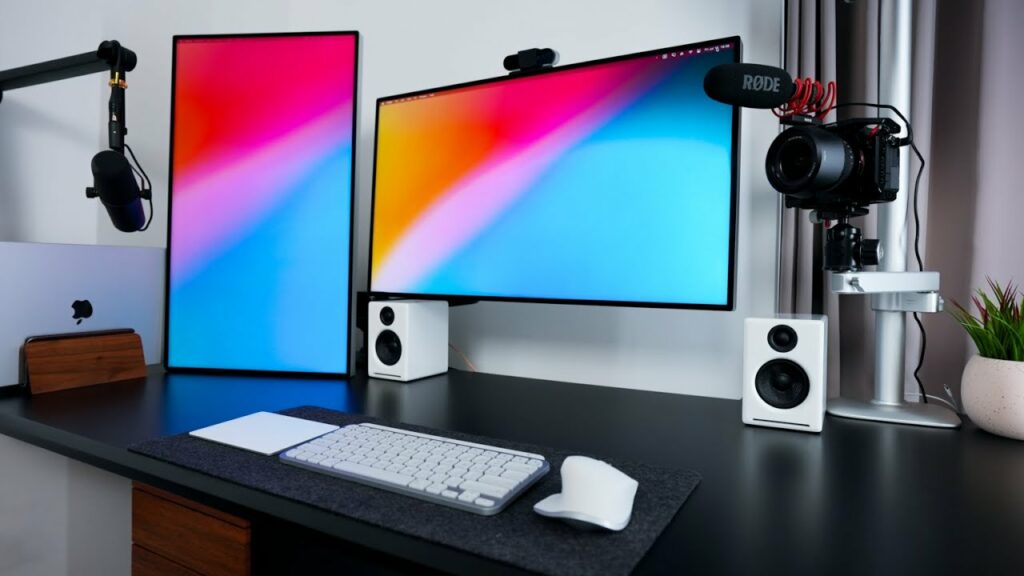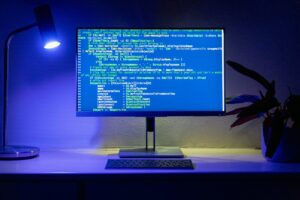How to set up dual monitors

Setting up dual monitors allows you to expand your workspace, increase productivity, and multitask efficiently across multiple screens. Whether you’re using Windows, macOS, or Linux, this comprehensive guide will walk you through the step-by-step process of setting up dual monitors, including hardware requirements, connection methods, display settings, and troubleshooting tips to ensure a seamless setup.
Understanding Dual Monitors Setup
Benefits of Dual Monitors
- Increased Productivity: Multitask more effectively by spreading out applications and tasks across multiple screens.
- Enhanced Workflow: View and compare documents, spreadsheets, or creative projects side by side without toggling between windows.
- Better Gaming and Entertainment: Enjoy immersive gaming experiences or watch videos on one screen while browsing or chatting on another.
Types of Dual Monitor Setups
- Extended Display: Use each monitor as a separate workspace, extending the desktop across both screens.
- Mirrored Display: Duplicate the same content on both monitors, ideal for presentations or sharing content.
Hardware Requirements
- Monitors: Ensure your computer supports connecting multiple monitors and check compatibility with your graphics card or integrated graphics.
- Cables: Depending on your monitors and computer ports, you may need HDMI, DisplayPort, DVI, VGA, or USB-C cables for connections.
- Graphics Card: Verify your graphics card supports multiple monitors, especially for gaming or high-resolution displays.
Setting Up Dual Monitors: Step-by-Step Guide
Step 1: Prepare Your Workspace
- Clear Desk Space: Arrange monitors side by side or align them according to your preference for optimal viewing and productivity.
- Check Connections: Ensure your computer has compatible ports (HDMI, DisplayPort, VGA, etc.) for connecting dual monitors.
Step 2: Connect Monitors to Your Computer
- Windows
- Connect Monitors:
- Power off your computer and monitors.
- Connect one end of the HDMI, DisplayPort, or VGA cable to each monitor and the other end to your computer’s corresponding ports.
- If using different connection types, consider using adapters or converters as needed.
- Verify Connections:
- Power on your monitors and computer.
- Windows should detect the new displays automatically. If not, right-click on the desktop > “Display settings” to detect and identify monitors.
- macOS
- Connect Monitors:
- Power off your Mac and monitors.
- Connect one end of the Thunderbolt, HDMI, or DisplayPort cable to each monitor and the other end to your Mac’s corresponding ports.
- Ensure macOS detects the displays automatically upon startup.
- Adjust Display Settings:
- Go to the Apple menu > System Preferences > Displays.
- Arrange displays to reflect their physical placement and adjust resolution settings as needed.
- Linux
- Connect Monitors:
- Power off your computer and monitors.
- Connect monitors using HDMI, DisplayPort, VGA, or other compatible cables.
- Power on your computer and monitors. Linux should detect displays automatically.
- Configure Display Settings:
- Depending on your Linux distribution and desktop environment (e.g., GNOME, KDE), navigate to display settings to arrange monitors and adjust resolution settings.
Step 3: Configure Display Settings
- Windows
- Adjust Display Settings:
- Right-click on the desktop > “Display settings.”
- Under “Multiple displays,” select “Extend these displays” to use dual monitors as an extended desktop.
- Arrange monitors based on their physical placement to match how you use them.
- Customize Resolution and Orientation:
- Set resolution and scaling options for each monitor.
- Choose landscape or portrait orientation based on your preference.
- macOS
- Arrange Displays:
- Go to the Apple menu > System Preferences > Displays.
- Click on the “Arrangement” tab to arrange monitors according to their physical layout.
- Adjust resolution and refresh rate settings as needed.
- Linux
- Configure Display Settings:
- Open system settings or display settings based on your desktop environment.
- Arrange monitors and adjust resolution settings to match your setup.
Step 4: Test and Adjust Display Alignment
- Align Monitors:
- Drag windows or applications across both monitors to ensure seamless movement and alignment.
- Adjust physical alignment or display settings if necessary to improve workflow and viewing comfort.
Step 5: Troubleshoot Common Issues
- No Signal or Display Not Detected:
- Check cable connections and ensure monitors are powered on.
- Update graphics drivers and restart your computer to detect displays.
- Mismatched Resolution or Scaling:
- Adjust resolution and scaling settings in display settings to match both monitors.
- Display Flickering or Artifacts:
- Ensure cables are securely connected and not damaged.
- Adjust refresh rate settings and update graphics drivers to resolve display issues.
Step 6: Additional Tips for Dual Monitor Setup
- Use Monitor Management Software: Install third-party software for advanced monitor management and customization options.
- Calibrate Colors: Adjust color settings and brightness to ensure consistent color accuracy across both monitors.
- Explore Display Options: Experiment with screen orientations, taskbars, and desktop wallpapers to personalize your dual monitor setup.
Best Practices for Dual Monitor Setup
- Optimize Workflow: Arrange monitors based on task priorities and workflow preferences for efficient multitasking.
- Regular Maintenance: Clean monitors and cables regularly to maintain optimal display quality and longevity.
- Update Drivers: Keep graphics card drivers up to date to ensure compatibility and performance improvements.
- Backup Settings: Save display configurations or profiles for quick setup restoration after system updates or changes.
Conclusion
Setting up dual monitors enhances productivity, improves multitasking capabilities, and provides a more immersive computing experience. By following the steps outlined in this guide and adjusting settings based on your operating system, you can effectively configure dual monitors for optimal performance and usability. Regularly update drivers, adjust display settings, and troubleshoot common issues to maintain a seamless dual monitor setup. If encountering persistent issues or unsure about any steps, consult manufacturer documentation, seek assistance from IT professionals, or explore online resources for additional guidance on setting up dual monitors.







